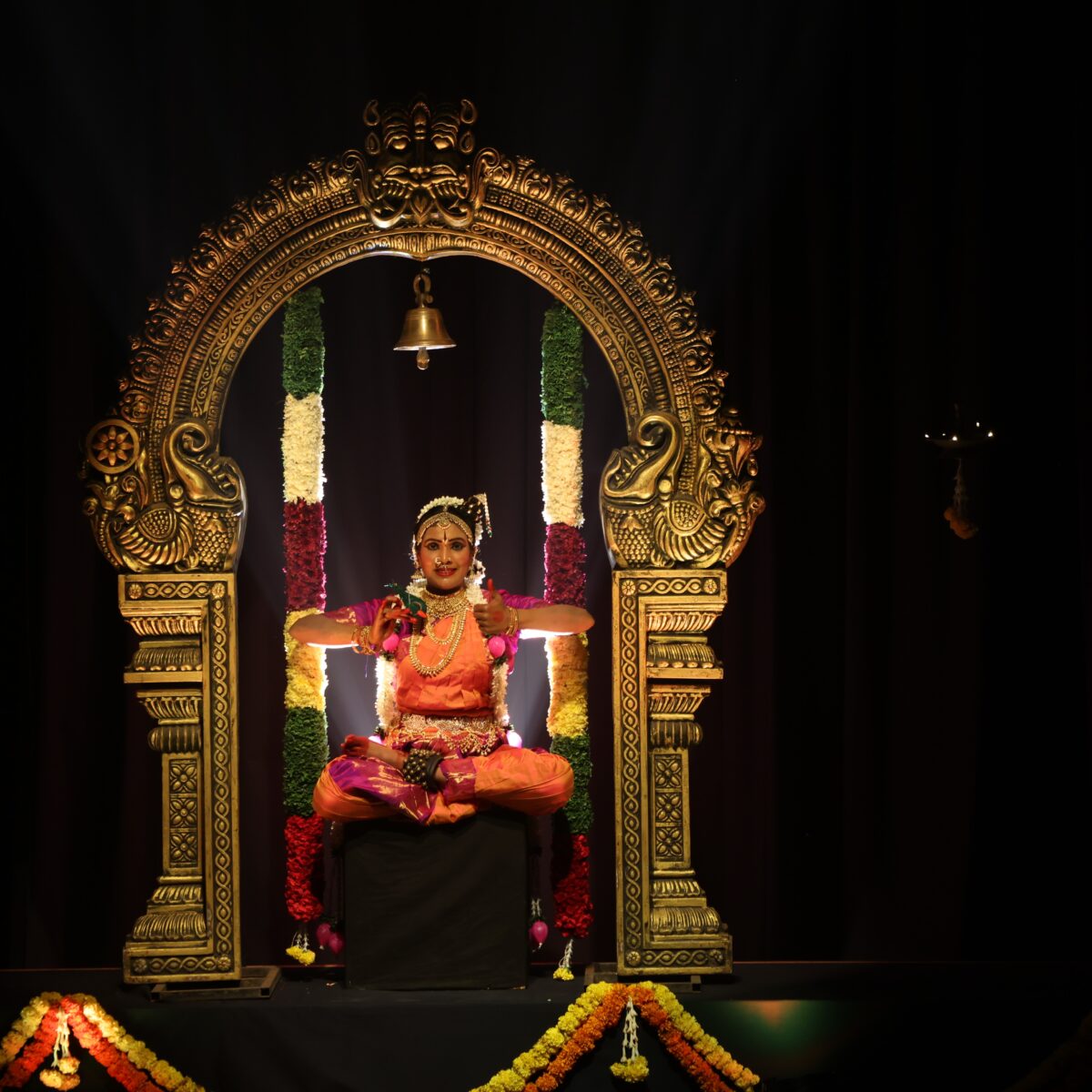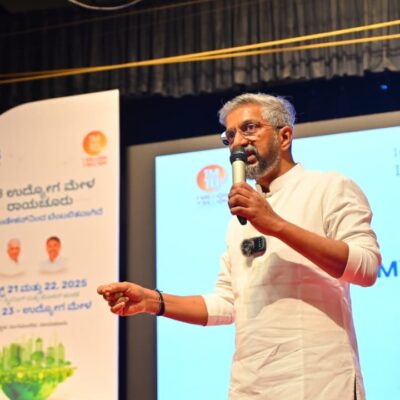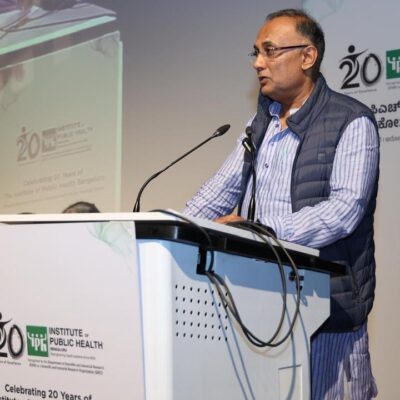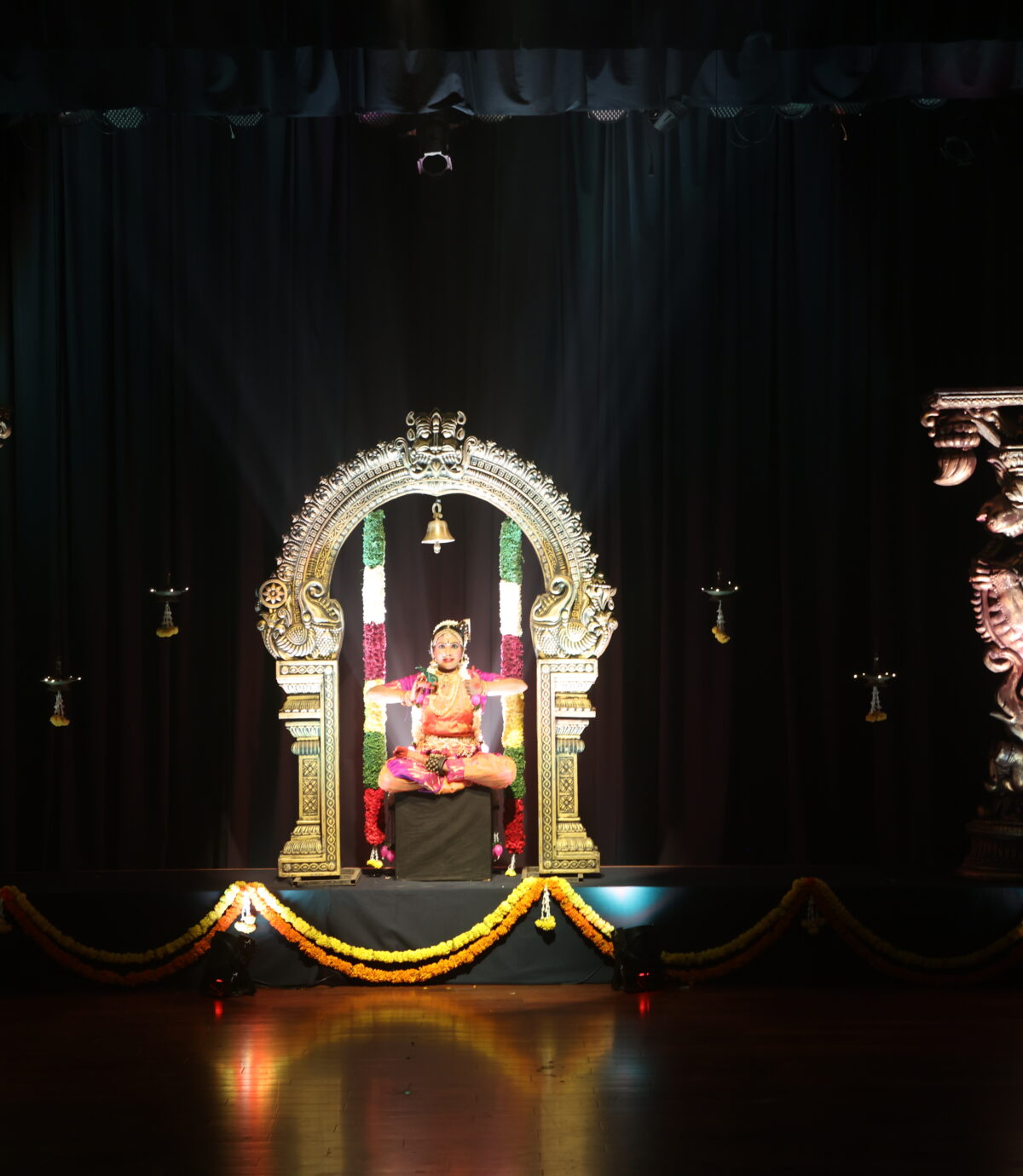
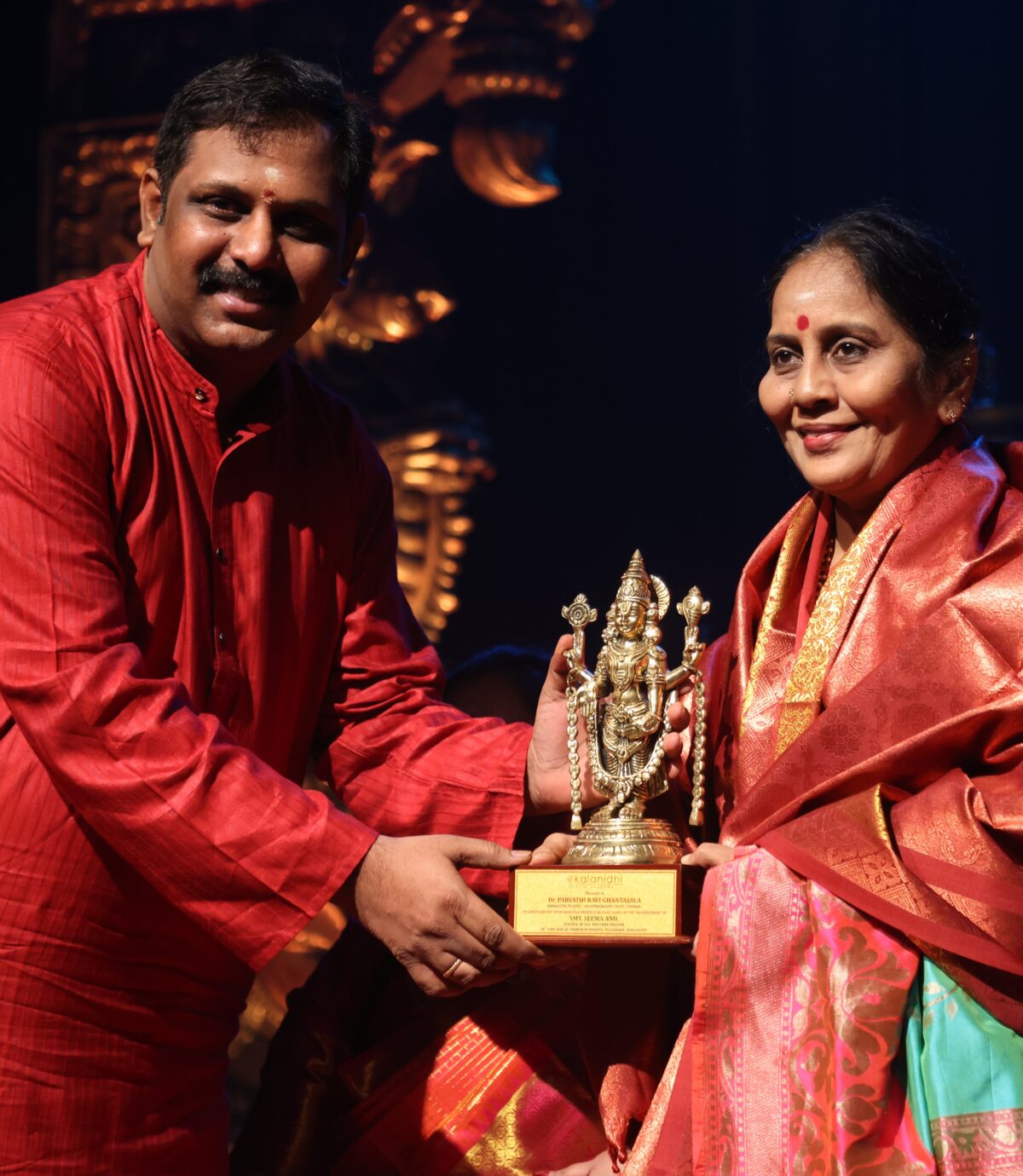
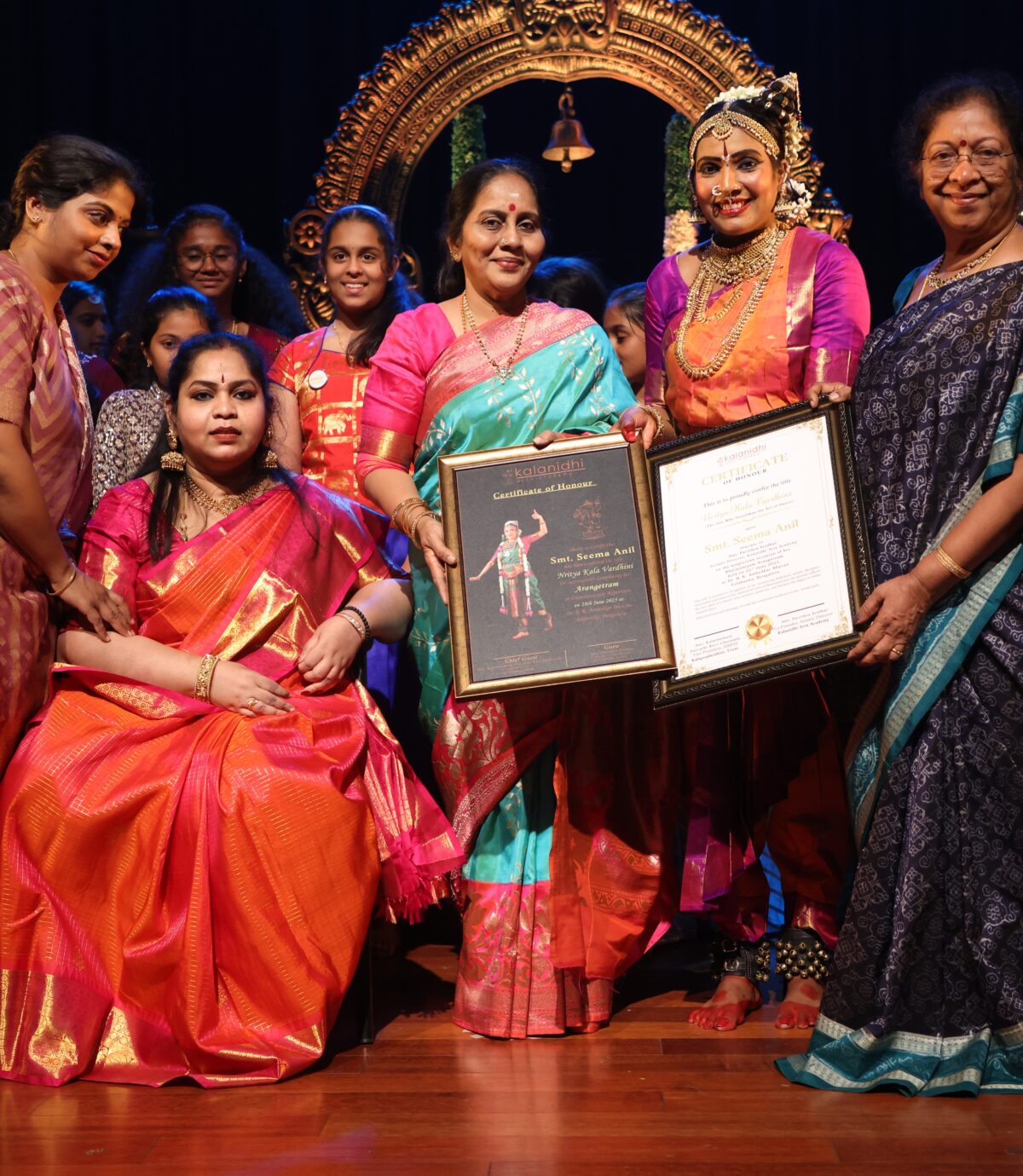
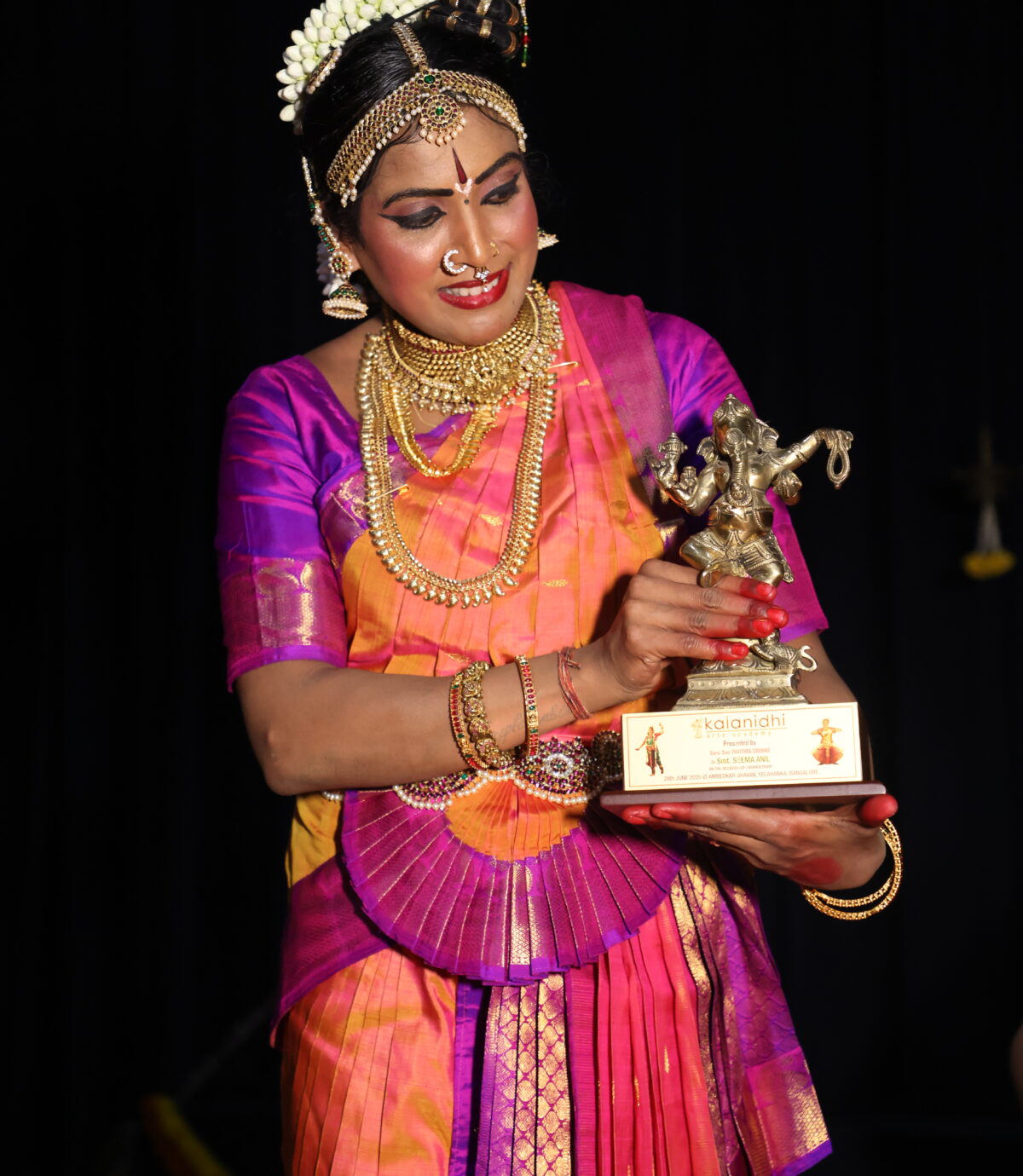
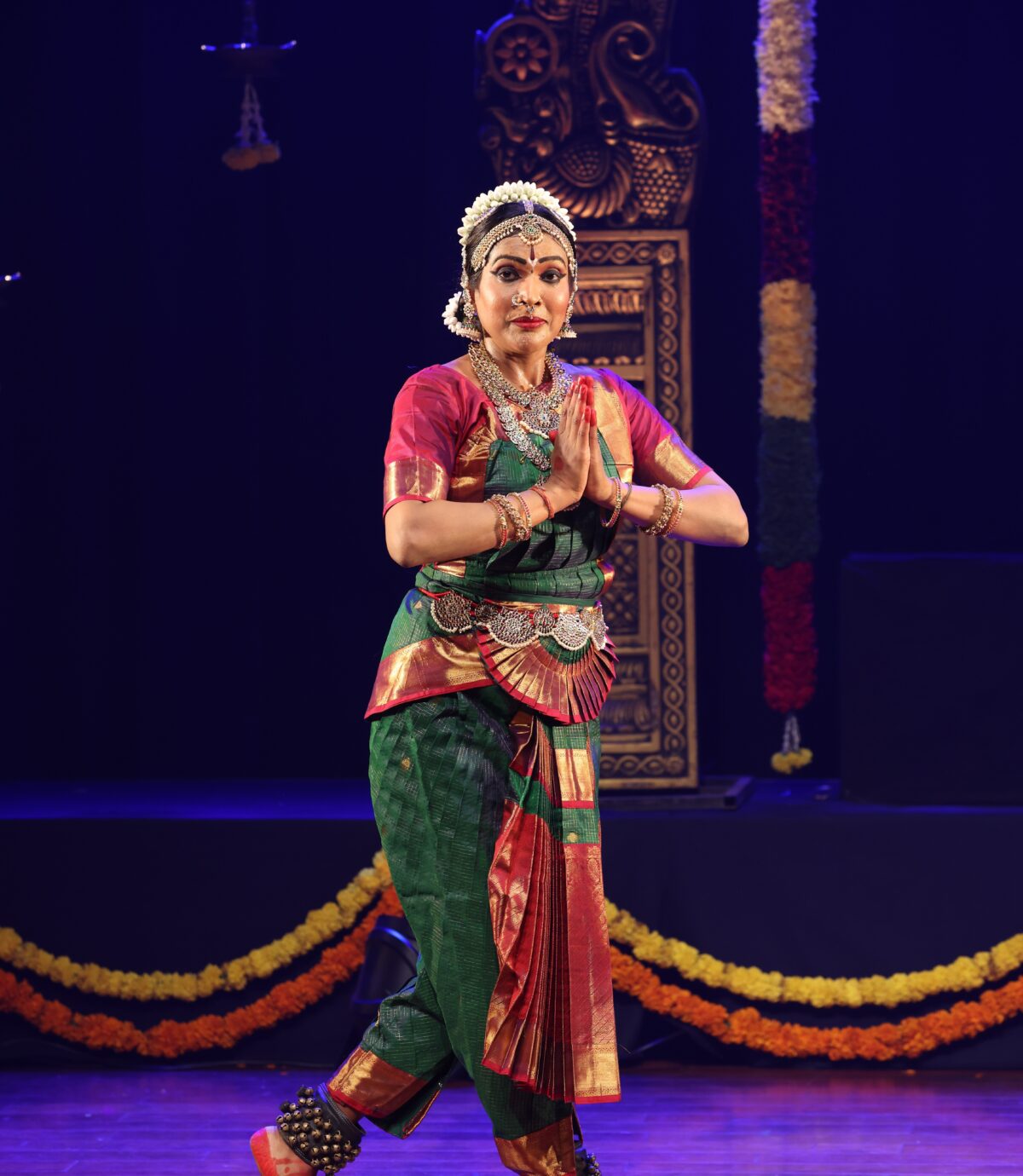
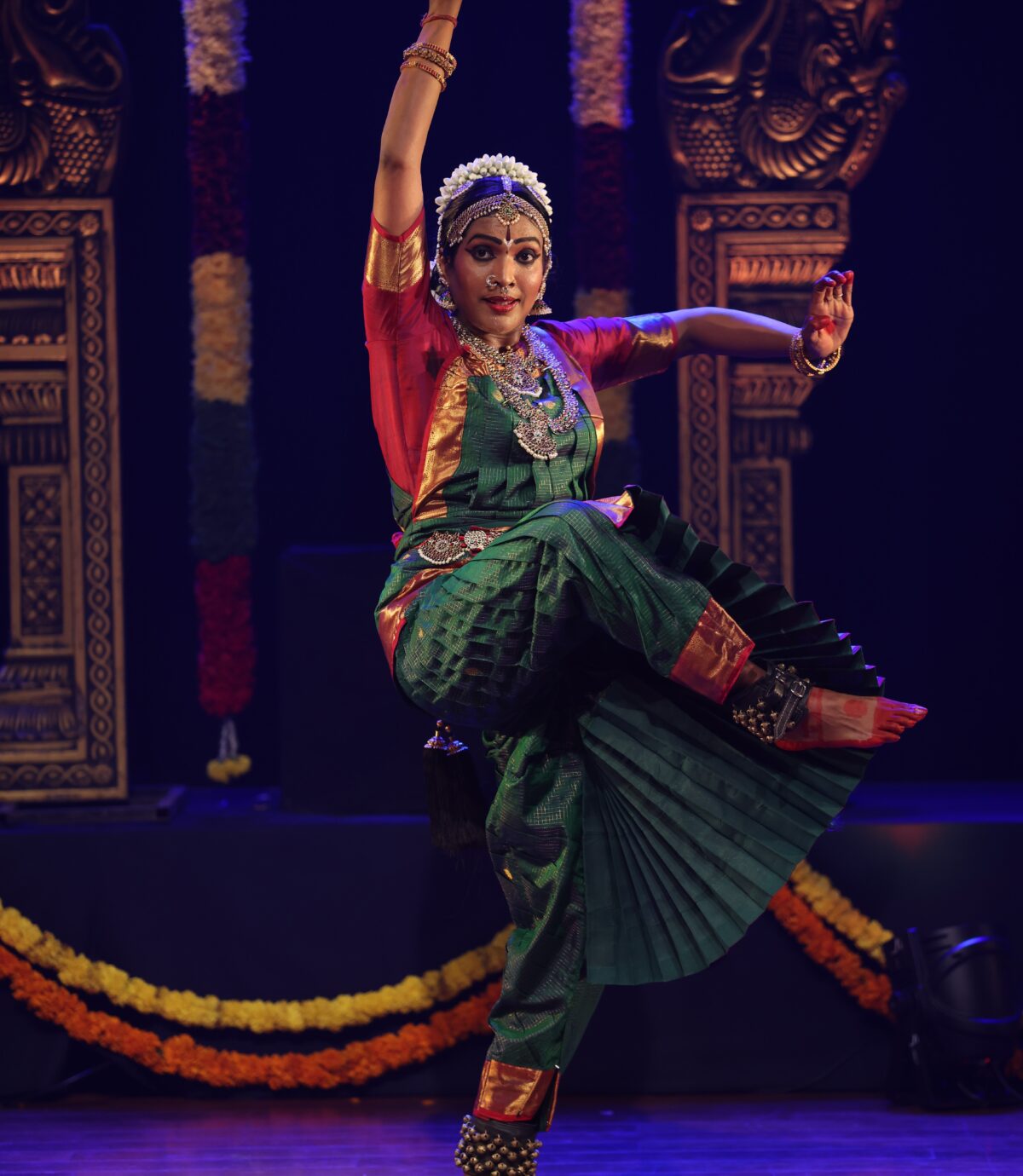
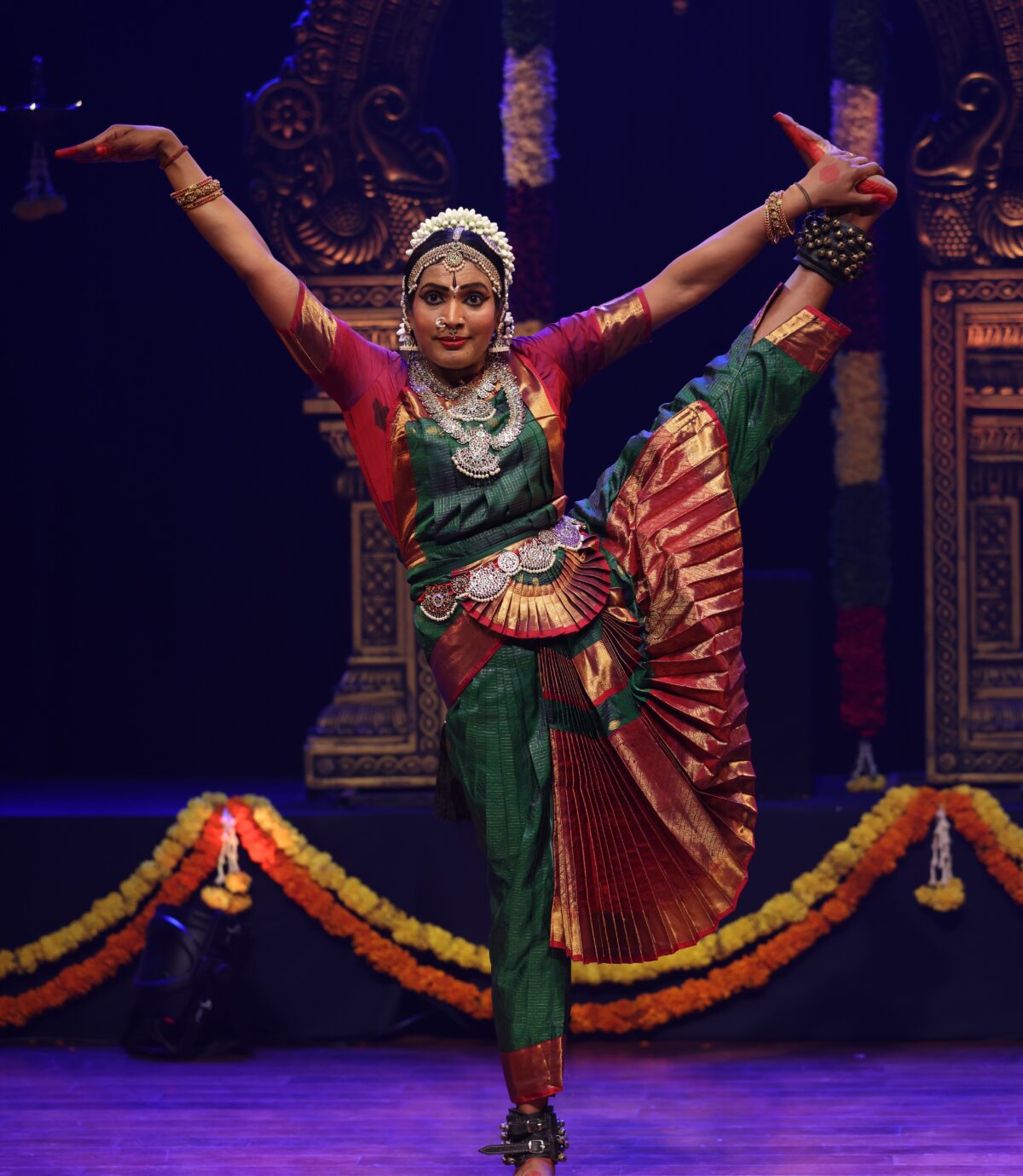
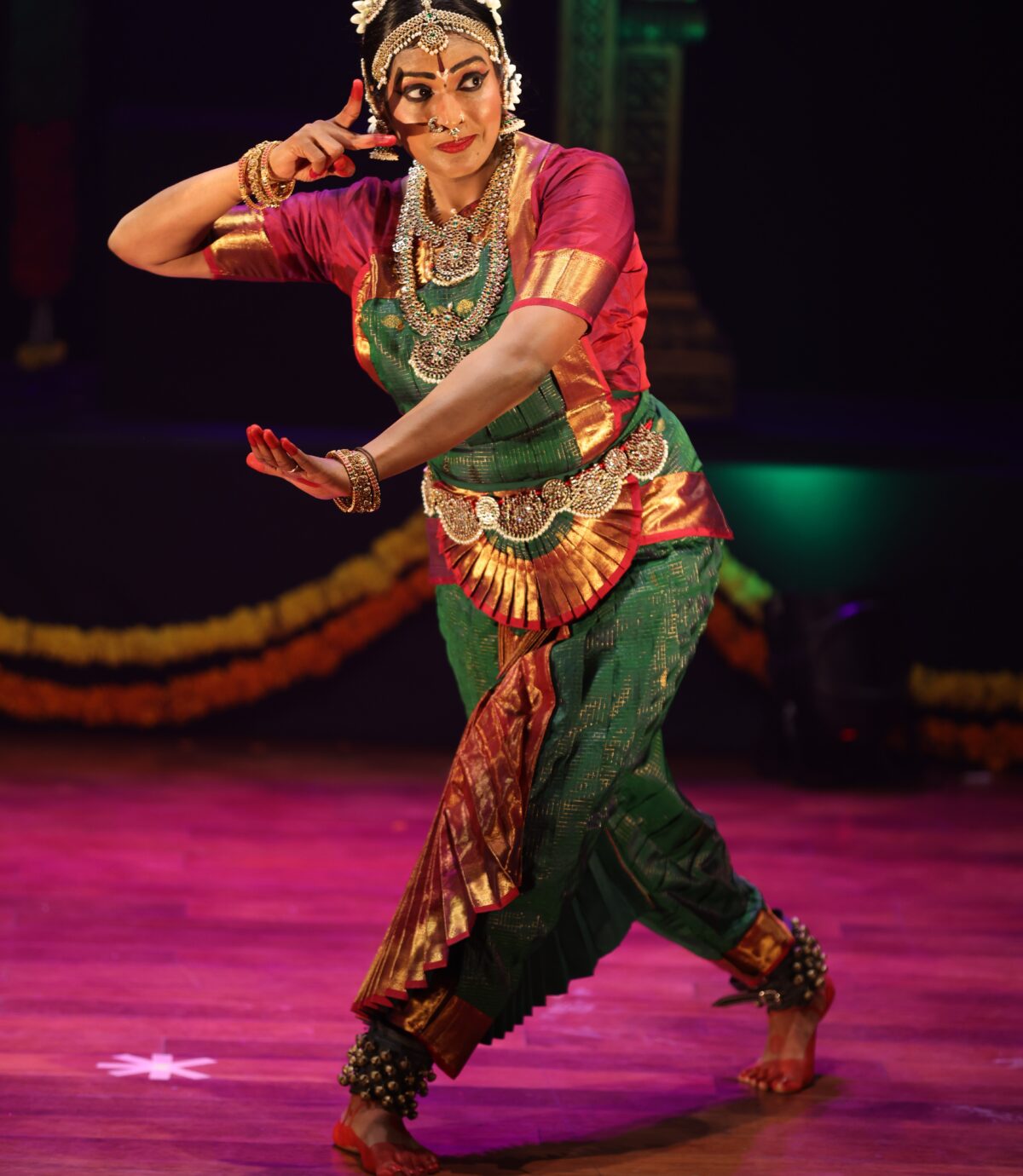
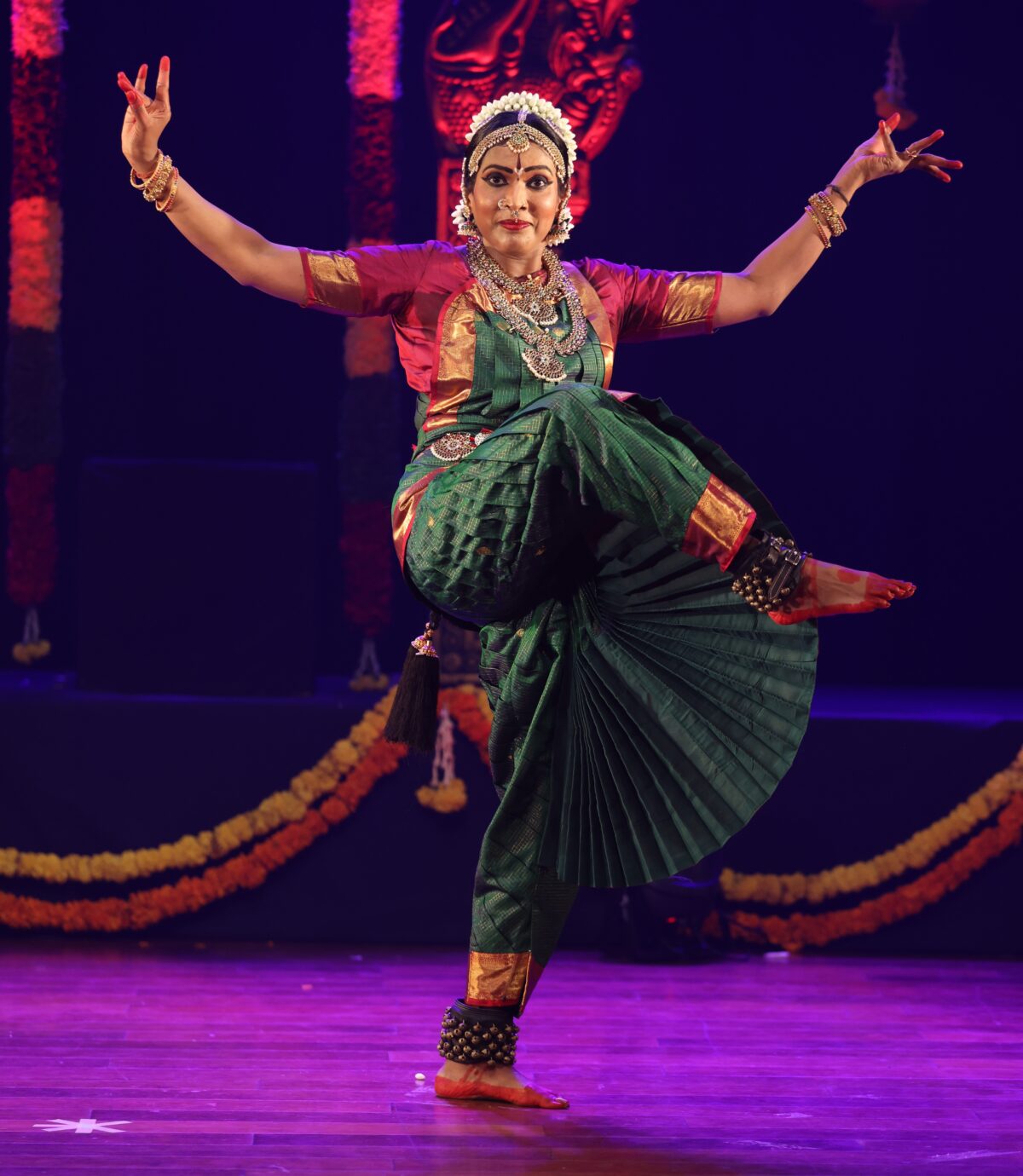
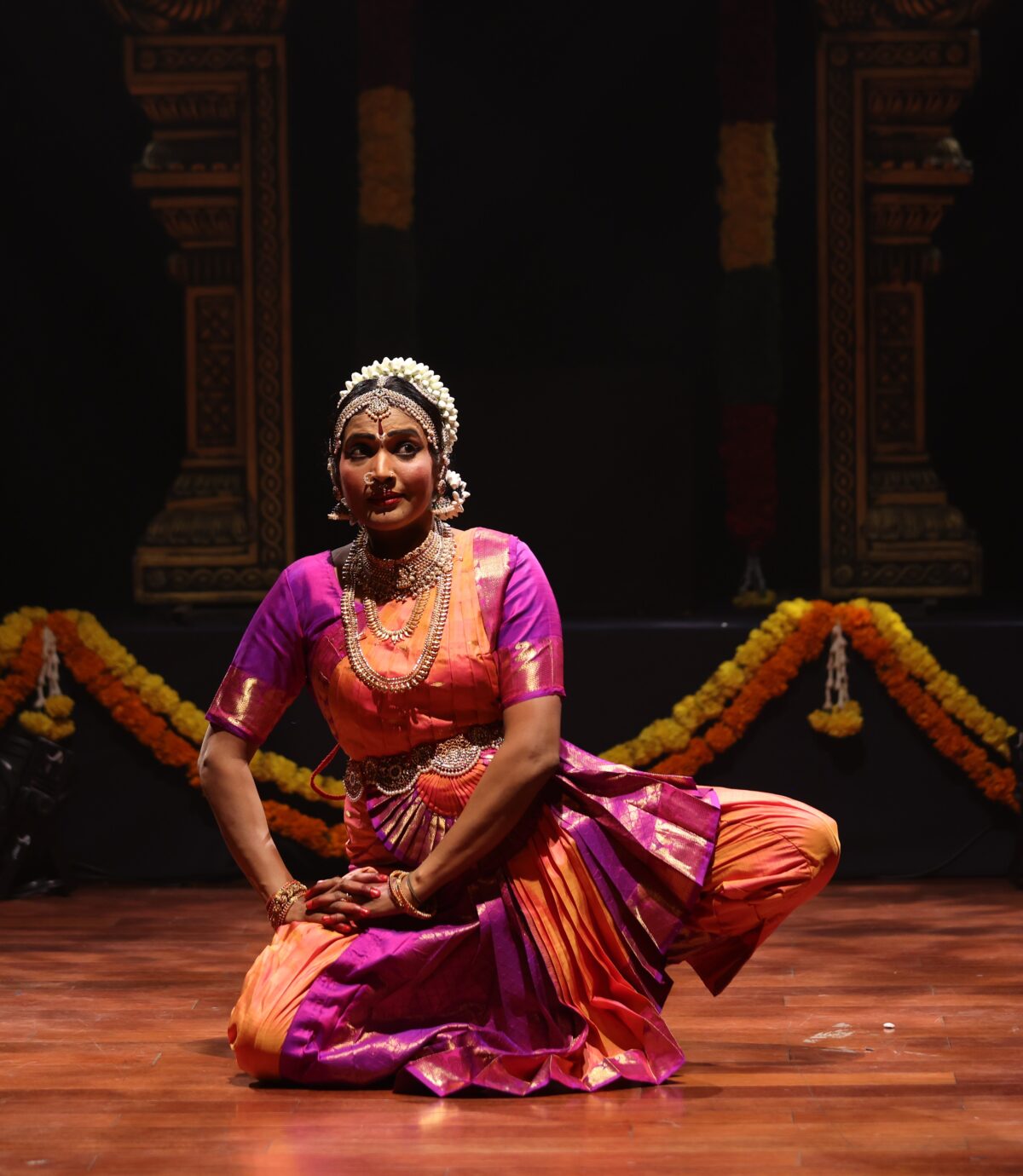
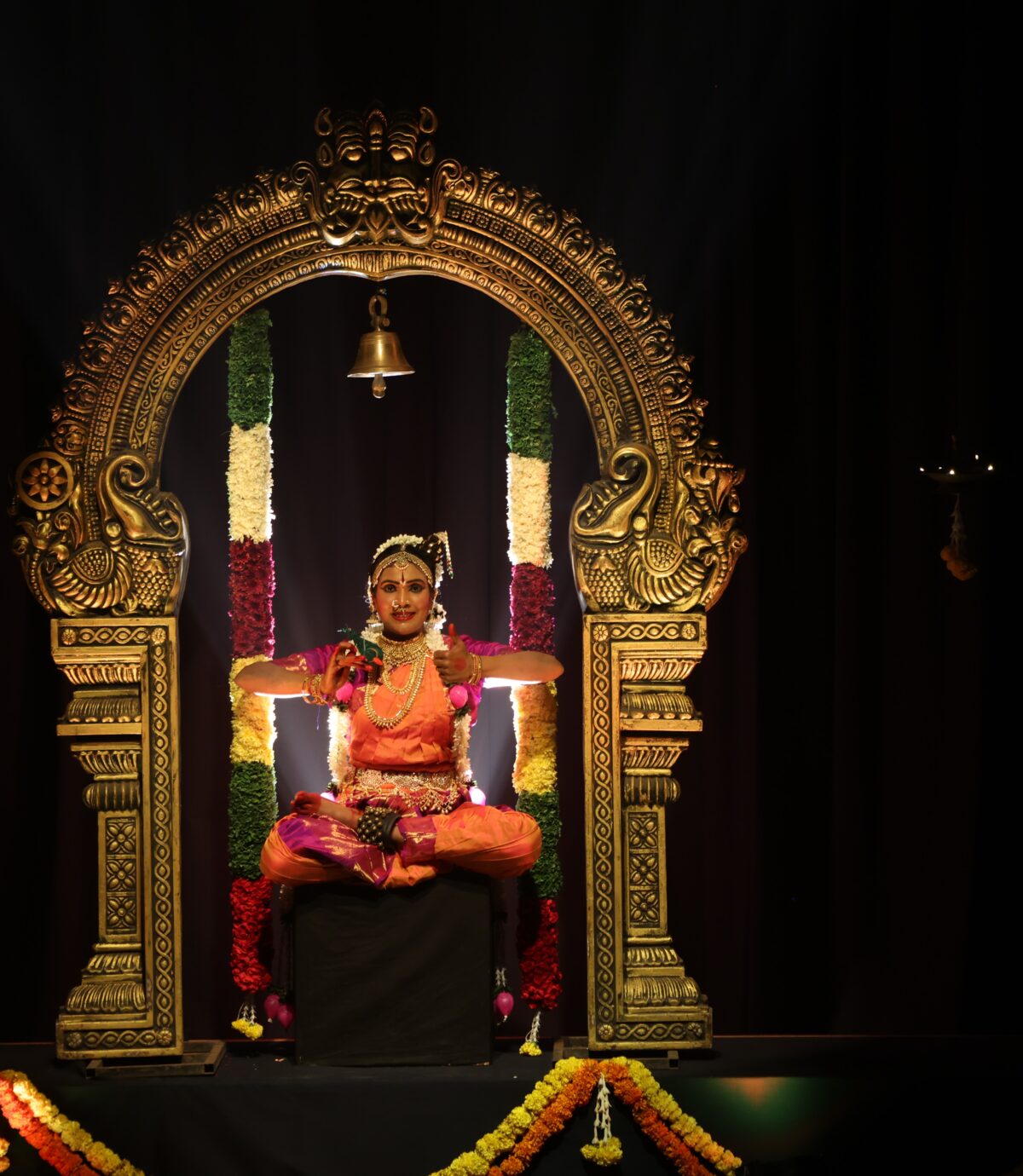
आंगिकम भुवनम यस्य वाचिकं सर्व वाङ्ग्मयम आहार्यं चन्द्र ताराधि तं नुमः (वन्दे) सात्विकं शिवम्
Your body is the movement of the world
Your words resonate through the entire universe
The Moon and the stars are your ornaments
I salute you O’ Shiva, the embodiment of Truth
Bengaluru: Forty can be the new fourteen, sometimes it is said. And this is what I got to see recently at a Bharatanatyam performance in the city.
Last Saturday, I had the privilege of being invited to the arangetram of Seema Anil, a student of Guru Pavithra Sridhar of the Kalanidhi Arts Academy in Yelahanka, who is a student of renowned dancer Kalaimamani Parvathi Ravi Ghantasala.
Seema wears many a hat — Professor of Architecture at a noted Engineering college in the city, mother of two, yoga practitioner and dance enthusiast.
She began learning Bharatanatyam at the age of 33, and after around a decade of discipline, tenacity and commitment, performed her arangetram at the BR Ambedkar Bhavan in Yelahanka.
Two distinguished guests who graced the event were renowned dancer Kalaimamani Parvathi Ravi Ghantasala and former Chief Justice of the Karnataka High Court, Justice Manjula Chellur.
The programme began with a performance titled Rishabha Mallari, with Ragam Nattai and Talam Rupakam.
The auspicious performance began with a vibrant invocatory piece steeped in temple tradition. The term Mallari refers to a genre of music performed on the nadaswaram during the ceremonial processions of deities in South Indian temples.
The Rishabha vahana — the divine bull — is traditionally associated with Lord Shiva, and symbolizes strength, stability and sacred movement.
In this adaptation for dance, Seema vividly portrayed a grand divine procession where:
- Lord Ganesha arrives first, heralding the occasion with His gentle majesty, offering blessings and removing all obstacles.
- Lord Muruga, youthful and radiant, then follows — riding His majestic peacock, holding the powerful spear, radiating divine courage.
- Then appears Lord Shiva, the cosmic dancer and ascetic, seated upon Nandi, adorned with matted locks, the crescent moon, and sacred ash.
- By His side is Goddess Parvati, seated on her lion, resplendent with compassion and shakti, blessing the universe.
Through striking jathis, processional movements, and temple motifs, this piece transformed the stage into a sacred courtyard where the deities themselves were welcomed.
It sanctifies the performance space and invites the blessings of the divine after which Seema began her spiritual offering through dance.
The second chapter was titled Alaripu, using ragam Thisram and Talam Rupakam.
Following tradition, Alaripu is performed next — a piece that signifies the blossoming or awakening of the dancer. The term Alaripu means ‘flowering bud’, and here, Seema gradually awakens her body, mind, and spirit in perfect harmony with rhythm.
Devoid of narrative or abhinaya, this is pure nritta, allowing the dancer to explore posture, symmetry, and tala through a combination of neck, eye, and limb movements.
It is a meditative offering — a physical and spiritual opening that prepares the dancer and audience for the emotional depth of the repertoire that follows.
The third bhaga was Varnam with ragam Navaragamalika and Talam Adi.
The centerpiece of any Bharatanatyam recital is the Varnam — and in Seema’s arangetram, it takes on powerful emotional and spiritual dimensions. This Navaragamalika Varnam, as the name suggests, is set in a garland of nine ragas, each evoking a different shade of rasa (emotion).
Here, Seema portrays the Nayaki, a young heroine deeply in love with Lord Shiva. She turns to her confidante — her Sakhi (dear friend) — and pours out her longing and anguish. Her love is not ordinary; it is a spiritual yearning for the Lord of Kailasa.
She vividly describes His form thus:
- His matted locks from which the Ganga flows,
- The crescent moon shining upon His brow,
- The serpent wrapped around His neck,
- His body smeared with vibhuti,
- And the fiery brilliance of His third eye.
Through shifting ragas and rhythmic interludes, Seema conveys the Nayaki’s inner storm — her hope, pain, ecstasy, pride, despair, and surrender.
The jathis mirror her emotional turbulence, and the abhinaya reveals her vulnerability and devotion.
This varnam is a masterpiece of both technique and expression — a dialogue between the soul and the divine, where the dancer becomes the voice of the seeker.
The fourth bhaga was Mahakali with Ragam Gowla and Talam Adi.
In this commanding piece, Seema invoked the awe-inspiring presence of Mahakali — the fierce and compassionate aspect of the Divine Mother. Mahakali is the destroyer of evil, the protector of righteousness, and the embodiment of cosmic power.
Through forceful yet graceful movements, dynamic poses, and powerful abhinaya, Seema presents the image of the Goddess in her supreme form — dancing amidst flames, her hair flowing wild, her tongue red, her weapons raised in justice.
The choreography evokes not only fear and reverence, but also the solace one finds in surrendering to the divine force that protects all creation.
This piece is a celebration of Shakti, the divine feminine energy in its purest, most formidable form.
The fifth bhaga was Poonkuzhil (Padam) with Ragam Kapi and Talam Adi.
In this lyrical padam, Seema becomes a maiden who is lost in a reverie of love and longing. The setting is Poonkuzhil — a divine orchard filled with blossoming flowers, cool breezes, and birdsong.
Amidst this beauty, she sees Lord Murugan arrive — radiant, divine, riding His peacock with eyes full of compassion and playful charm.
She imagines hearing His voice — a sweet murmur that melts her heart — but before she can respond, He vanishes like a lightning flash. Though startled and momentarily saddened, she continues to relish the experience.
The sights, the fragrance, the music, the stillness — all remain with her.
She consoles herself with a quiet faith: He will return. He, the beloved of Valli, the one who knows her heart, will surely not forget her. With that conviction, her sorrow is replaced by peace — and her love becomes devotion.
This piece showcases Seema’s sensitivity in abhinaya, as she shifts between imagination, emotion, and stillness with grace.
The sixth bhaga was Thillana with ragam Gambhiranattai and Talam Adi.
With bright energy and rhythmic brilliance, Thillana is the grand culmination of the performance. In this piece, Seema celebrates the sheer joy of movement, weaving together jathis, sculptural poses, and graceful patterns to create a vibrant tapestry of rhythm.
The raga Gambhiranattai lends grandeur, while the choreography sparkles with vitality. Though abstract in nature, the Thillana often ends with a brief devotional gesture — a humble offering to the divine, tying rhythm back to bhakti.
In conclusion of this spiritual journey, Seema offered Mangalam, a traditional benediction in praise of Goddess Kamakshi of Kanchipuram — the divine Mother of love, wisdom and compassion.
This piece expressed gratitude to the Divine, the Guru, the audience and the art form itself.
It was a moment of serenity and fulfillment — a prayer that the blessings received through this dance may extend into the lives of all those who witnessed it.
Note of gratitude
A special mention must be made of members who constituted the music ensemble — Pavithra Sridhar on Nattuvangam, Srividya Ramanath on vocals, Prithvi Krishna on Mridangam, Skanda Kumar on Flute, and Srikanth Nittur on the Veena — for offering brilliant support, making the programme a delight.
The programme was compered by Veena Raju, and the lighting was instituted by Surya Rao, an accomplished dancer himself.
About the organisers
Kalanidhi Arts Academy, founded by Guru Pavithra Sridhar in Yelahanka, Bengaluru, is a vibrant centre dedicated to preserving and propagating Indian classical dance, especially Bharatanatyam, through a deeply rooted, yet progressive pedagogy.
Known for nurturing students of all ages and backgrounds, the academy is built on the belief that art is a lifelong journey, accessible to all who approach it with passion and discipline.
Kalanidhi emphasizes both tradition and expression, shaping artists who are not only technically proficient, but spiritually and emotionally attuned to the essence of the form.

